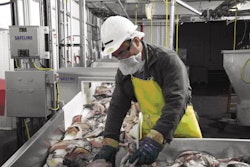Customarily this column deals with specific issues pertaining to a single ingredient. Things like ingredient origin, impact from processing, nutritional value and ingredient misperceptions are unpacked and rewrapped in context. Seldom has this been a forum for broader petfood ingredient discussions. Maybe as we turn the corner on a new year, it is a good opportunity to add a new wrinkle.
So, rather than making a new year's resolution, the following action list is proposed. The purpose is to identify a few small steps that would streamline information exchange about ingredients used to produce petfoods and offer more clarity to communicate with the pet owner/consumer. The list could be long, but these five are proposed as a place to start.
1. Ingredient suppliers: provide a complete nutrient breakdown of your ingredients. Petfood companies are obligated to meet the requirements of more than 40 nutrients for the foods they sell. This information doesn't just fall out of the sky. The company must either perform the analysis themselves at several thousand dollars per nutrient or rely on reputable nutrient resource datasets when assessing whether the ingredient will work in a particular product.
To their credit, a number of responsible ingredient suppliers routinely supply this detailed information, but too many do not. Some presume, incorrectly, that this is the sole responsibility of the petfood company or that accurate data is available in reference tables. However, the supplier is the expert on their particular ingredient(s) and needs to supply this information. That includes full nutrient analysis of premixes, too!
2. Premix and flavor suppliers: voluntarily provide your customers with the full list of ingredients and their inclusion levels. Getting this information shouldn't require a nondisclosure agreement. Without exception, none of the ingredients used in these mixes is exempt. So, if the petfood company has to include it to comply with the prevailing regulations-then so should you.
Further, when assembling ingredient listings in order of predominance, the micronutrients or additives are often sorted down to the fourth and fifth decimal place. Without a detailed composition (to two or more decimal places) it is impossible, outside of guessing, to properly align these minor ingredients on the label.
3. State feed control officials and Food and Drug Administration : mandate the use of parentheses for vitamin and trace mineral premixes on ingredient lists and discard the term "byproduct" from the lexicon.
To construct an all-inclusive list of ingredients in order of predominance, the individual vitamins and trace minerals often get interspersed with non-nutritive additives and other micro-ingredients. This causes confusion for consumers to the point that some call customer service lines asking for the removal of key nutrients (e.g., menadione sodium bisulfite complex, ethylenediamine dihydriodide) because they don't recognize these chemical names as vitamins or minerals. The use of parentheses is consistent with human food labeling and could reduce confusion for the pet owner.
In this "green" age, insisting on the term byproduct is earth-unfriendly. We should be promoting the use of quality secondary material streams in an effort to reduce, reuse and recycle. Plus, it is technically incorrect to assume the chicken leg on your dinner plate is the principal product when, in fact, it is a secondary product now that it is not being used for locomotion by the chicken. Thus, by your own definition, everything we eat or feed our pets is actually a byproduct.
So, come clean with the name and reduce our carbon-footprint at the same time by simply naming ingredients as what they are-if it is a lung, spleen or intestine, allow it to be labeled as such. For rendered meals, define them as "with" or "without internal organs" whether they be from fowl, fin or hoof. Then consumers will be armed with the information they need to make an informed choice.
4. National Research Council (NRC): commission a full and comprehensive update of the United States-Canadian Tables of Feed Composition. This document was last updated in 1982. To put it into perspective, this precedes laptops, cell phones and the World Wide Web. The world has changed and so has the composition of many ingredients.
In today's internet age, an online application, maybe even a wiki, would lend itself to a community effort-with independent commercial laboratories, petfood manufacturers and ingredient companies all participating-and continual improvement as new feed/petfood ingredient analyses were performed. Any bias could be removed through judicious use of statistics and an agreement among participants on definitions.
While national and regional governments have funded human and livestock work along these lines, any progress that the US petfood industry makes will require self-funding. So, where previous efforts have fallen short, the industry, possibly led by the American Feed Industry Association or Pet Food Institute, will have to help nudge (shove) the NRC forward to make this a reality.
5. United States Department of Agriculture (USDA): include some pet-centric nutrient information in the USDA National Nutrient Database for Standard Reference SR22. There are several food databases around the world, but this is one of the most comprehensive nutrient datasets known.
Given so many petfoods have begun incorporating meats, vegetables, fruits, herbs and other ingredients out of the human ingredient supply chain, this dataset could expand its constituent base if it included just a few more nutrients. Examples would include things like crude fiber, chloride, iodine and biotin and, while you're at it, a value for taurine would be nice, too. Further, add the nutrient profile for the "refuse" identified on many ingredients-some pets relish those parts.
If any one of these actions were to be initiated this year, it could provide immediate benefit to pets and owners with lower costs, more choices and more responsive pet products. Thus, if any of these actions compels you, please tell someone. Maybe by mass action we will get momentum behind some of these actions and take our industry into a more ingredient-informed age.





.png?auto=format%2Ccompress&fit=crop&h=167&q=70&w=250)











